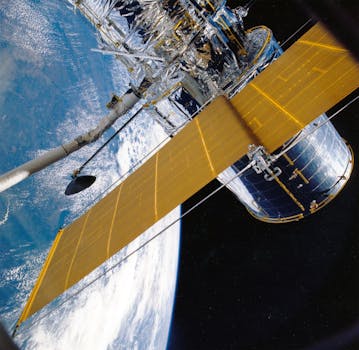
GEO Satellites: Introduction to Geostationary Orbit Satellites
GEO satellites, or geostationary orbit satellites, are a type of satellite that orbits the Earth at an altitude of approximately 36,000 kilometers, which allows them to remain stationary relative to a fixed point on the Earth’s surface. This unique characteristic makes GEO satellites ideal for a wide range of applications, including telecommunications, weather forecasting, and navigation.
Geostationary orbit satellites have been in use for several decades, with the first GEO satellite, Syncom 2, launched by NASA in 1963. Since then, numerous GEO satellites have been launched, providing critical services such as television broadcasting, internet connectivity, and mobile communications. The focus keyword GEO satellites is essential in understanding the technology and applications of these satellites.
How GEO Satellites Work
GEO satellites work by using a combination of propulsion systems and gravity to maintain their position in geostationary orbit. The satellites are equipped with solar panels and batteries, which provide the necessary power to operate the satellite’s systems and transmit data. The satellites also have a sophisticated navigation system, which ensures that they remain stationary relative to a fixed point on the Earth’s surface.
The communication systems on GEO satellites are designed to receive and transmit data to and from Earth stations, which are located on the ground. The data is transmitted through a system of antennas and transponders, which amplify and re-transmit the signal to its intended destination. This allows GEO satellites to provide a wide range of services, including television broadcasting, internet connectivity, and mobile communications.
Applications of GEO Satellites
GEO satellites have a wide range of applications, including telecommunications, weather forecasting, and navigation. They are used to provide television broadcasting services, including direct-to-home (DTH) television, which allows users to receive television channels directly from the satellite. They are also used to provide internet connectivity, particularly in areas where terrestrial infrastructure is limited or non-existent.
GEO satellites are also used for weather forecasting, providing critical data on weather patterns and storms. They are equipped with sophisticated sensors and cameras, which capture high-resolution images of the Earth’s surface and atmosphere. This data is used to predict weather patterns and provide early warnings for severe weather events.
Conclusion
In conclusion, GEO satellites are a crucial part of modern telecommunications and space exploration. Their unique characteristics, including their geostationary orbit and sophisticated communication systems, make them ideal for a wide range of applications. As technology continues to evolve, it is likely that GEO satellites will play an even more critical role in our daily lives, providing essential services such as telecommunications, weather forecasting, and navigation.